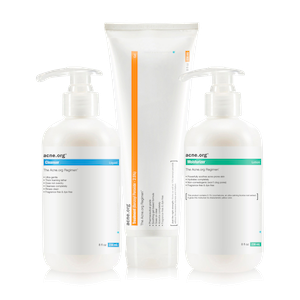Are they acne scars? They seem to be red/pinkish weird looking skin, like shiny/plastic and shallow indentations. will natural skin fill out on top of them and level it out? Or will they always be indentations? Will the reddish/pink looking color at least go away?
I'm asking because usually the acne scars I've seen just look like holes in the skin. But I've never seen any weird pinkish fleshy looking skin like mine...it's so weird
i will post a pic if needed
Cortisone and Fade Creams
With a new scar that is left after the whitehead has gone, your skin might be swollen around it. If it is red and swollen, use a cortisone cream to help reduce the inflammation. Cortisone creams and lotions can be bought from most drugstores without the need for a prescription.
Secondly youll wan to focus on lightening any dark areas left from the acne scar.
Look for the following ingredients in any skin lightener cream:
Kojic acid is a natural skin lightener derived from mushroom extract and is a good substitute for Hydroquinone, as Hydroquinone has been rumoured to cause irritation adn quite possibly cancer.
Other good options for skin lighteners are Arbutin, aka bearberry extract, and vitamin C.
Laser and Filler Treatments
However in the case your scars do no fade away on their own, you might have to pay a visit to a dermatologist. They will most likely provide you one of two options: either laser therapy or filler therapy.
In one to three sessions, depending on how severe your condition is, laser skin resurfacing using fractionated laser technology can even out the skin surface and increase and stimulate the formation of new collagen. Collagen is a protein that's a building block of the skin. The new collagen can help fill in acne scars.
Ablative lasers vaporize your scar, allowing smoother skin to take its place. Non-ablative lasers help activate the production of collagen without damaging the surface of your skin.
Filler injections can help fill in the indentations left behind from deep acne scars, but the downside to fillers is that they need to be repeated every 4 to 6 months, as the product reabsorbs into the skin over time.
Patience
Unfortunately all these opions require one thing above all: patience!
Usually a few weeks after you break out and scar, new blood vessels move into the injured area to give nourishment to the skin, which is why most early scars look pink.
Months later, collagen will start to form, filling in the injured section of skin and it should fade out.
Unfortunately in the case of cystic acne, the acne destroys skin and fat and it can take up to a year for the scars to fade.
In addition to seeking treatment its also important to stay out of the sun as much as possible as UV radiation causes the scars to darken and actually slows down the healing process. In the same way your body reacts to sunlight by producing a tan, in scar tissue this can lead to discoloration with your normal skintone, making scars even more prominent. So make sure to lather up the sunscreen when going outside!
Also dont pick and squeeze your scars as you might inadvertently introduce bacteria and other impurities to the healing skin.
And lastly do not put Vitamin E on the scars. This is just an urban myth. Studies have shown that in 90% of cases where people put Vitamin E on their scars it had no effect/made it worse. In 33% of cases even people developed contact dermatitis (further inflammation of the skin).
 Acne.org Products
Acne.org Products